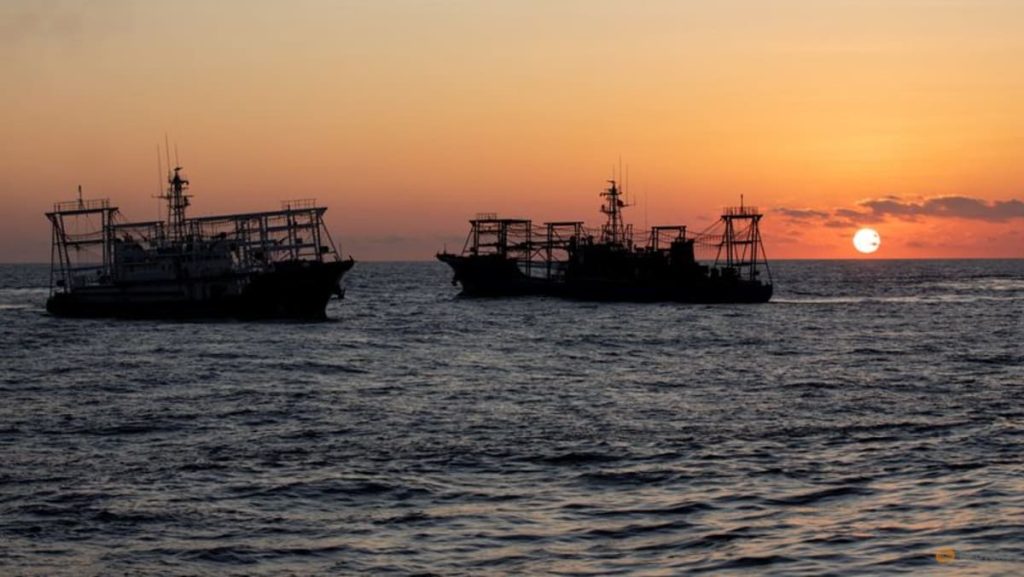The South China Sea continues to be a region of significant geopolitical tension, with the latest incident involving a resupply mission by the Philippines to its grounded warship, BRP Sierra Madre, at Second Thomas Shoal. This atoll, located within the Philippines’ Exclusive Economic Zone (EEZ), is also claimed by China, leading to persistent friction between the two nations. The Chinese Coast Guard reported monitoring and questioning the Philippine civilian vessel carrying provisions throughout its operation, reiterating their claim of sovereignty over the area and their commitment to enforcing their perceived rights within the Spratly Islands. Conversely, the Philippine Department of Foreign Affairs confirmed the successful rotation of personnel and resupply of the BRP Sierra Madre, emphasizing the peaceful nature of the mission. This contrasting portrayal of events highlights the deep-seated mistrust and conflicting narratives that characterize the South China Sea disputes.
The grounding of the BRP Sierra Madre in 1999 serves as a physical manifestation of the Philippines’ claim to Second Thomas Shoal. The rusting vessel, intentionally run aground, now acts as a makeshift military outpost, housing a small contingent of Philippine marines. China views this presence as an illegal occupation and has repeatedly called for the removal of the ship. The Philippines, however, maintains that the shoal falls within its EEZ and therefore has the right to maintain a presence there. This situation creates a delicate balance of power, with both sides wary of escalating the situation while simultaneously asserting their respective claims. The resupply missions, crucial for sustaining the Philippine presence, become highly sensitive operations, scrutinized and challenged by China, further contributing to the volatile dynamics of the region.
China’s response to the latest resupply mission reflects its broader strategy in the South China Sea. By closely monitoring and publicizing its surveillance of the Philippine vessel, China reinforces its assertion of sovereignty and control over the disputed waters. The statement issued by the Chinese Coast Guard emphasizes their commitment to upholding “rights protection and law enforcement activities,” a veiled warning against any actions they deem contrary to their claims. Furthermore, by calling on the Philippines to “honour its commitments,” China implicitly refers to past agreements and understandings regarding the South China Sea, seemingly suggesting that the resupply mission violates these agreements. This rhetoric serves to pressure the Philippines while simultaneously attempting to portray China as the responsible actor seeking stability in the region.
The Philippines, for its part, is walking a tightrope between asserting its sovereign rights and avoiding a direct confrontation with China. The resupply mission, conducted by a civilian vessel, could be interpreted as an attempt to de-escalate tensions. By avoiding the use of military vessels, the Philippines signals a desire to avoid provocations while simultaneously fulfilling its obligation to sustain its personnel on the BRP Sierra Madre. The Department of Foreign Affairs’ statement, highlighting the peaceful completion of the mission, further underscores this approach. This measured response reflects the Philippines’ complex geopolitical position, needing to balance its relationship with China, a major economic partner, with its commitment to defending its territorial integrity.
The ongoing disputes in the South China Sea have broader implications for regional stability and international law. The area is a crucial waterway for global trade, and the competing claims by several nations, including China, the Philippines, Vietnam, Malaysia, Brunei, and Taiwan, create a complex web of overlapping interests. China’s assertive actions, including island-building and military deployments, have heightened concerns among its neighbors and the international community. The United States, while not a claimant, has a significant naval presence in the region and has conducted freedom of navigation operations, challenging China’s expansive claims. This further complicates the dynamics and adds another layer to the already tense situation.
The latest incident at Second Thomas Shoal underscores the precarious nature of the South China Sea disputes. The competing claims, historical narratives, and strategic interests make finding a peaceful resolution a formidable challenge. While both China and the Philippines have expressed a desire for stability, the underlying tensions remain, and the risk of miscalculation or unintended escalation persists. The international community plays a crucial role in encouraging dialogue, promoting adherence to international law, and fostering a peaceful resolution to these complex maritime disputes. The future of the South China Sea, a vital artery of global commerce and a region of significant geopolitical importance, hinges on the ability of all parties involved to navigate these treacherous waters with prudence and restraint.

